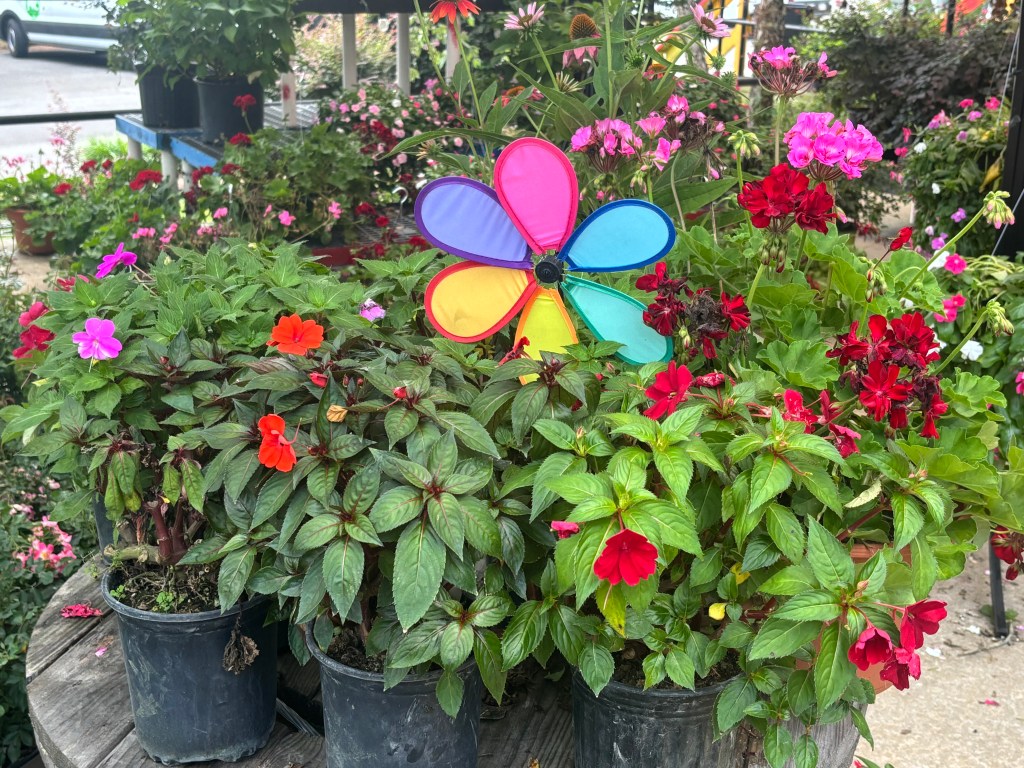Spring has sprung, now what do we do?
Published 2:09 pm Monday, June 16, 2025

- Flowers growing at The Perry Wellness Center, which also sells vegetables in their farmers market, open from 9 a.m. to 5 p.m. weekdays and 9 a.m. to 4 p.m. Saturday.
For real gardeners and those of us who aspire to produce even a handful of edible tomatoes, spring is an exciting time. Ads for miracle fertilizers and lawn equipment start dominating the air waves in January. We check the Farmer’s Almanac for guidance and try to predict the date of the last freeze. Myself, I always ask Mike Johnson when he thinks it will be safe to plant. A former farm hand turned window washer, (Mikes Window Washing), he is always dead on. Generally, by April 1st, all the garden beds have been prepared and planted with spring vegetables and flowers. By June 1st, some produce is already being harvested and the Zinnias planted around the mail box next door look beautiful. But by around mid June, the Spring excitement fades to a distant memory as enthusiasm turns to frustration. “Hot as heck” days and daily gully washers challenge even the most seasoned horticulturist. But do not lose hope. Summer can be just as productive as Spring if you know what to plant and how.
“We always plant three gardens each year, and the Summer garden is my favorite,” says master gardener Kay Snipes, owner of Topiaries in Americus. “Tomatoes, eggplant and peppers are all tropical plants and not bothered by the hot weather. I also do a lot of herbs like rosemary, basil, thyme and cilantro. They are great for summer cooking and salads. They are also easy to grow in pots on the porch. They like a dry climate and are not bothered by the heat.” For the procrastinators who are starting to feel a little bit envious of their neighbor’s cucumbers and squash, it is not too late to plant a raised bed. Snipes uses cinderblocks because they don’t rot and are easy to move around and reshape.“You don’t need a deep bed. Most plants only need about 12 inches. I cover the ground at the bottom of the bed with cardboard or burlap bags from the coffee shop. Then I fill it with a pick-up truck load of mushroom compost from Lawn Barber in Leesburg. It is important that you use good soil that is sterilized to minimize the number of weeds. This will allow you to plant more plants closer together. Once everything is in the ground, I plant mainly plants this time of year, not seeds, I fill in the [bed] with wheat straw. The straw preserves moisture and also contains a chemical that deters weeds. Don’t forget to ring your garden with flowers such as Marigolds to discourages pests and to plant flowers that attract pollinators. My favorite is Phlox. I love the blue flowers and it also attract humming birds. Oh, and don’t forget to check your garden daily. Most pests can be eradicated through daily maintenance.”
The University of Georgia publishes some informative charts on its website extension.uga.edu which provide general information regarding which vegetables can be planted for Fall harvest. Lots of different beans, asparagus, beets, broccoli, cabbage, cantaloupe (if you get it in before June 20), carrots, cauliflower, collards, eggplant, kale, lettuce, mustard, okra, onions, bell peppers, radish, spinach, summer squash and zucchini, some tomatoes, turnips and pumpkins. The best pumpkin for this area according to Snipes, is the UGA Orange Bulldog, “which is technically a squash.” Pumpkins are started from seeds. Available on UGA website estoree.uga.edu, $10.80 for 50 seeds, includes shipping. (But you better hurry up if you want the big one by Halloween).
For shrubs and trees, David Calhoun of Calhoun Irrigation and Landscaping recommends that you avoid transplanting established trees and shrubs this time of year. “Summer is a terrible time to dig up and move anything. Once they push out new growth, you shouldn’t move them. You have to wait until the new leaves harden. This time of year, it’s best to buy trees and shrubs that are grown in buckets. Get advice from your landscaper on how much to water them. A common mistake is too much water, which can drown them. Drip irrigation bags, sometimes called Gator Bags, which are filled with 5 to 10 gallons of water about every 4 days and drip an appropriate amount of water are a viable way to water small trees.” $18.00-$25.00 online.
David Lankford, a long time Americus resident is about to start planting his annual herb garden. “I first started looking into herbs when I hurt my back. Now I’m adding roses. I have an above ground garden that is about four by four feet. Just different types of herbs I like. I enjoy it and feel healthier.”
For most of us, planting a garden is not the most economical way to obtain fresh produce. One local resident said, “I love my garden. The tomatoes work out to be about $15.00 each by the time it’s all said and done, but I think it helps my blood pressure.”






